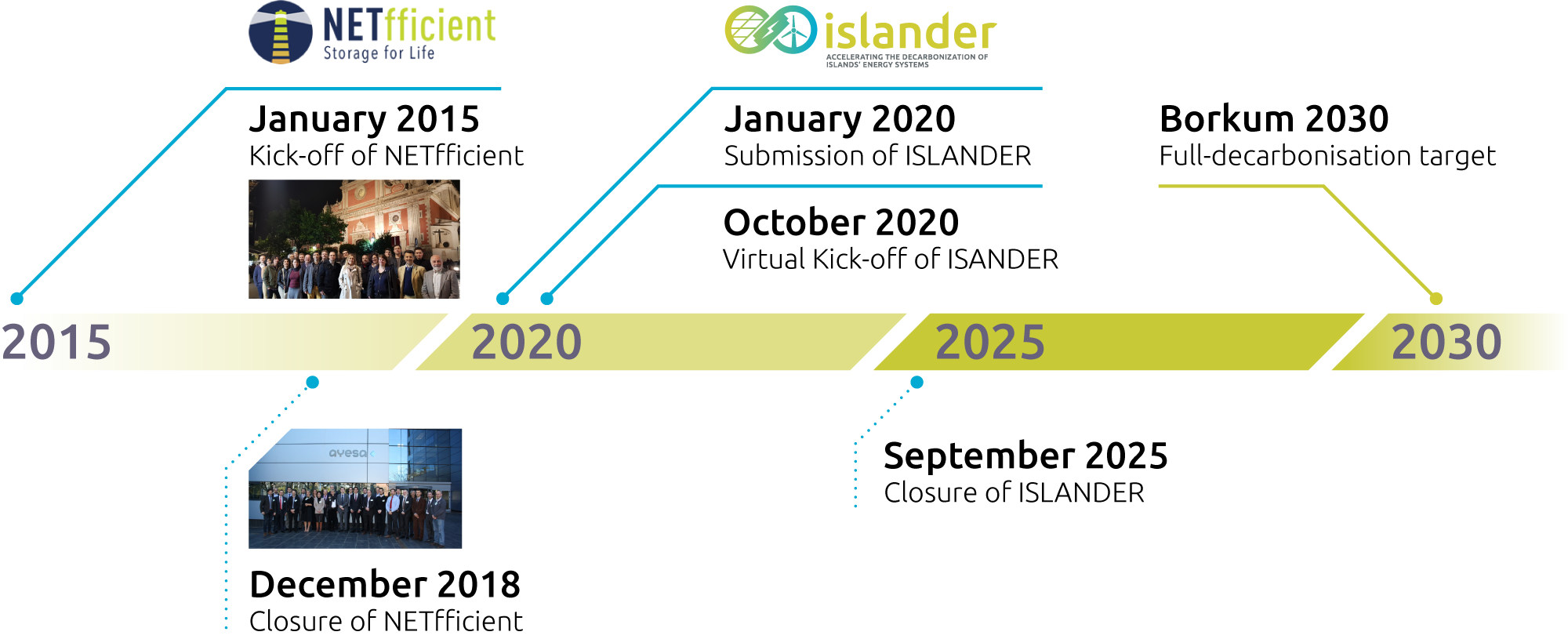Following concerns of the population regarding air quality due to a new coal fired power plant on the Dutch coast, Borkum started on a path towards renewable energy many years ago. Yet the challenges associated with the intermittent nature of power supplied by such renewable sources currently remain: Consumption peaks cannot be met by solar and wind energy and expensive grid electricity needs to be bought in. Vice versa, peak generation leads to energy exports at unfavourable conditions. A logical step to tackle this challenge is to investigate energy storage, which was indeed the research objective of the previous H2020 NETfficient project coordinated by partner AYESA.




Follow us